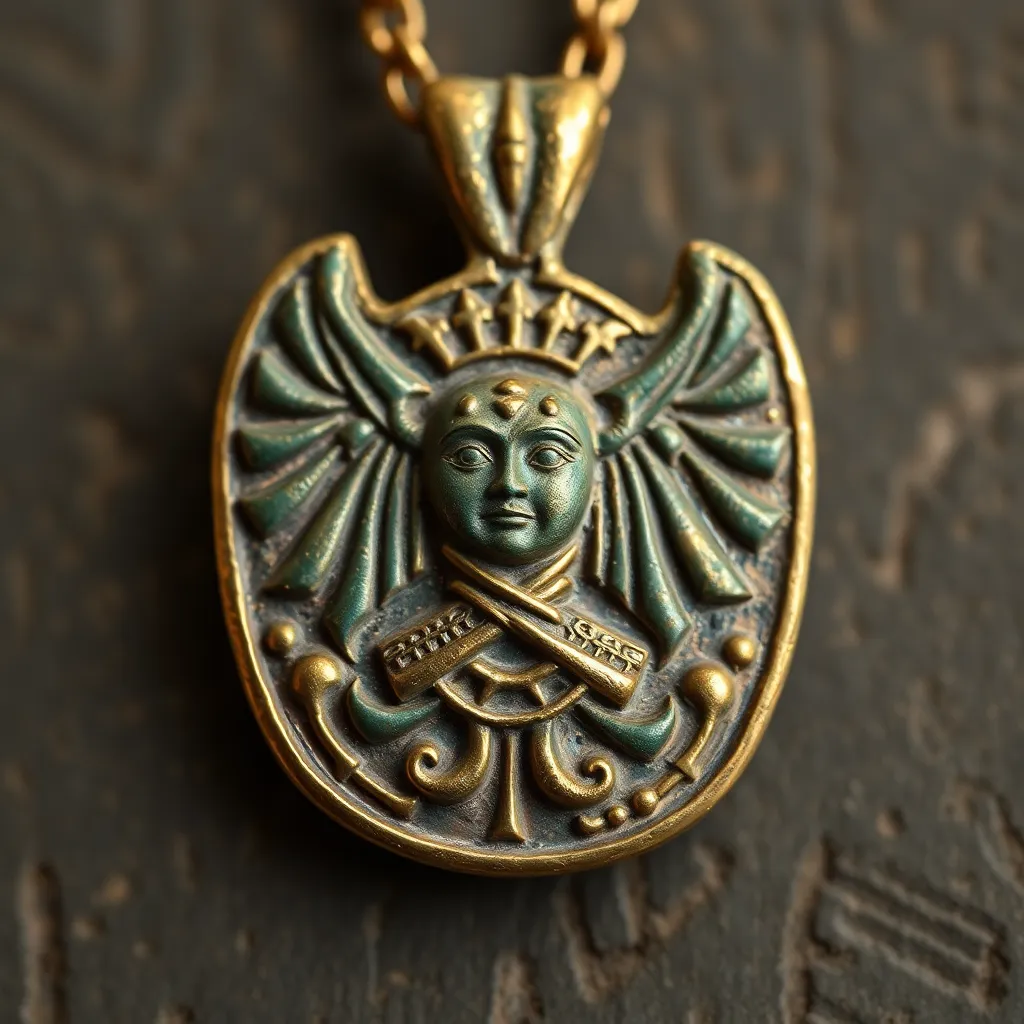The Influence of Amulets on Egyptian Literature and Mythology
I. Introduction
Amulets in ancient Egypt were more than mere ornaments; they were imbued with significant spiritual and protective qualities. Crafted from various materials, these small objects served as tokens of power and protection against malevolent forces. In Egyptian culture, amulets were integral to both daily life and the afterlife, symbolizing the profound beliefs and practices of the time.
This article aims to explore the multifaceted influence of amulets on Egyptian literature and mythology, examining their historical context, symbolism, and their enduring legacy in both ancient and modern interpretations.
II. Historical Context of Amulets in Ancient Egypt
The origins of amulets in ancient Egypt date back to the pre-dynastic period, evolving significantly throughout the ages. Initially, amulets were rudimentary and made from natural materials, but as Egyptian craftsmanship advanced, so did the complexity and artistry of these protective charms.
Common materials used in the creation of amulets included:
- Stone (e.g., lapis lazuli, turquoise)
- Glass
- Bone
- Wood
- Metal
The forms of amulets varied widely, ranging from simple beads to intricate representations of gods, animals, and symbols. These objects played a crucial role in daily life, believed to provide protection, health, and luck. In the afterlife, amulets were essential for safeguarding the deceased against evil spirits and ensuring a safe passage to the afterworld.
III. Symbolism and Meaning of Amulets
Egyptian amulets were rich in symbolism, each designed with specific meanings to convey protection and blessings. Common symbols found in these amulets included:
- The Eye of Horus – a symbol of protection and royal power
- Ankh – representing life and immortality
- Scarabs – symbolizing rebirth and transformation
- Lotus flower – associated with creation and rebirth
In literature, these symbols often conveyed deeper meanings and played significant roles in narratives. For example, the Eye of Horus not only represented physical protection but also symbolized the restoration of health and wholeness in various mythological tales. This connection between symbolism and mythology illustrates how amulets were woven into the fabric of Egyptian storytelling.
IV. Amulets in Egyptian Literature
Amulets appear frequently in ancient Egyptian texts, most notably in religious and funerary literature such as “The Book of the Dead.” This text provided guidance for the deceased in the afterlife, often containing spells that invoked the protective power of specific amulets.
In poems and stories, amulets were often depicted as essential to the hero’s journey or the protagonist’s safety. They served a narrative function, symbolizing the connection between the physical and spiritual worlds. The presence of an amulet could denote favor from the gods or a safeguard against impending doom.
V. Amulets in Egyptian Mythology
In mythological narratives, amulets held significant roles, often associated with divine protection and favor. Deities such as Isis and Thoth were linked to specific amulets, reflecting their powers and protective qualities. For instance:
- Isis was often depicted with the ankh, symbolizing her role as a goddess of life and magic.
- Thoth, the god of wisdom, was associated with the ibis amulet, representing knowledge and protection.
These connections illustrate how amulets served as protective symbols in mythological tales, providing characters with the necessary strength to overcome challenges and adversities.
VI. The Cultural Impact of Amulets
The influence of amulets extended beyond ancient Egypt, impacting subsequent Egyptian literature, arts, and even other ancient cultures. The symbolism of amulets was adopted by neighboring civilizations, reflecting a shared understanding of the protective and spiritual significance of these objects.
In modern interpretations, amulets continue to captivate the imagination, often featured in art, literature, and popular culture. They serve as a bridge connecting past beliefs with contemporary practices, highlighting the enduring legacy of these ancient tokens.
VII. Archaeological Findings and Their Literary Implications
Archaeological discoveries of amulets in tombs have provided invaluable insights into their literary connections. Findings from notable sites, such as the tomb of Tutankhamun, revealed a wealth of amulets, each with its own story and significance, enhancing our understanding of their cultural importance.
These findings have helped scholars draw connections between physical artifacts and their representations in literature. For instance, the discovery of a scarab amulet in a tomb may correspond with its mention in texts describing the journey of the deceased through the afterlife, illustrating the practical applications of these beliefs.
VIII. Conclusion
In summary, amulets played a crucial role in shaping Egyptian literature and mythology. Their protective qualities, rich symbolism, and integral presence in narratives highlight their significance in the cultural landscape of ancient Egypt. As we reflect on the enduring legacy of amulets, it becomes evident that their influence resonates in contemporary culture, inspiring ongoing research and exploration into their meanings and applications.
For those interested in further research, examining the archaeological context of amulets, their representations in lesser-known texts, and their impact on modern spiritual practices could provide deeper insights into this fascinating aspect of ancient Egyptian culture.




